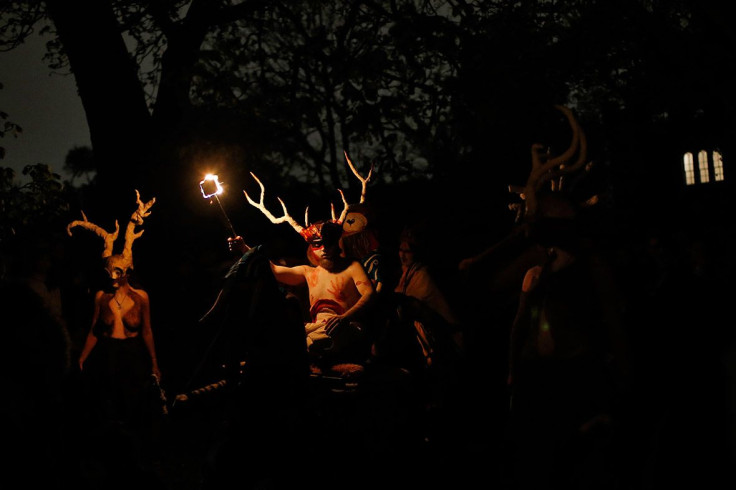Beltane 2015: 3 Things You Need To Know About The Pagan Festival

Pagans in the Northern Hemisphere will begin marking the spring festival of Beltane Thursday night, celebrating the abundance of the coming year. Beltane is one of the eight annual festivals or “sabbats” on the pagan calendar. While the holiday, also known as May Day, is most closely associated with fertility, it is also a community festival that brings together friends and families in public celebrations that traditionally incorporate bonfires and maypoles.
The honoring of connections with neighbors and others is a significantly resonant aspect of Beltane, according to Molly Khan, a pagan living in the Midwest. “I’ve begun connecting more and more what were once very personal celebrations to my community at large,” she wrote in a post for the religion site Patheos.
For those unfamiliar with Beltane, here are three important things to know about the pagan festival:
Celtic History
Beltane, also spelled Beltine or Beltaine, comes from the Celtic word meaning “fires of Bel,” in reference to the Celtic sun deity. The Celts celebrated the coming summer with rituals that honored fertility and open pasturing. Historical accounts describe the custom of driving cattle between two bonfires, in a ritual that was believed to magically protect the cattle from disease before they were led into summer pastures. This custom was still observed in Ireland until the 19th century.
The holiday continues to be prominently celebrated in Scotland as well, and remains an important part of both countries’ folk traditions. Edinburgh’s annual Beltane Fire Festival is one of the world’s most famous Beltane celebrations and draws people from around the world for festivities which, while not religious, are meant to recall the ancient traditions of the country.
Importance of Fire
Fire is one of the most significant motifs in the Beltane celebration because of its traditional association with purification and revitalization. As a result, Beltane rituals have historically incorporated bonfires, over which people would jump in the belief that it would bring good fortune and fertility.
Today, many modern pagans continue the tradition of building these bonfires since fire is a significant symbol of community bonding, according to paganism expert Patti Wigington. “[The fire] is a place where the entire community gathers around -- a place of music and magic and dancing and lovemaking,” she wrote.
Common Rituals
Along with building bonfires, modern-day pagan observances of Beltane also include dancing around a maypole with ribbons tied to it. The ceremonial folk dance performed around a pole hung with ribbons is not exclusively associated with Beltane and is also a common folk practice across Europe on May 1.
Beltane also is a time for planting and cultivating greens, to honor the holiday’s celebration of fertility. Certain trees have distinct associations with Beltane, including ash, oak and hawthorn.
Some also use the holiday as an opportunity for small, thoughtful gestures toward those in need of healing or care. Preparing baskets of fresh flowers for elderly or shut-in neighbors is one way some pagans choose to incorporate the theme of fertility in support of their community on the holiday.
© Copyright IBTimes 2024. All rights reserved.






















